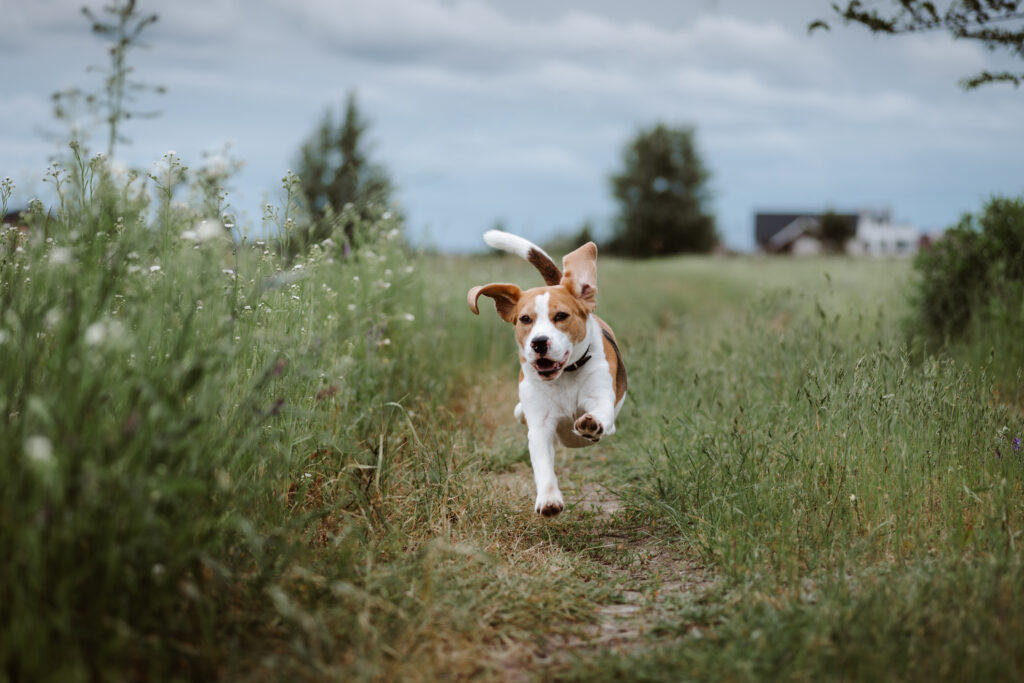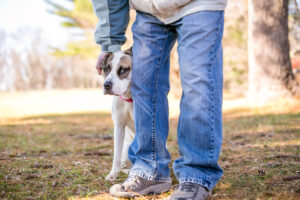Occasionally, there are things in life that sound too good to be true – and if you own a dog who is particularly stubborn or difficult to train, the idea that they will be able to safely explore different environments off-leash may sound like an implausible, impossible dream.
Yet that dream may actually be closer to reality than you might think. With repetition, a solid training plan, and some guidance from a professional dog trainer, your dog can behave reliably off-leash – which unlocks a number of huge benefits for both you and your dog.
Several of our dog training clients around the United States have experienced the benefits that come with off-leash training. Hank, owned by Emma Shelby, recently graduated from a Board and Train program with our Charlotte dog trainer, Kress Walters. As Emma explains, it has transformed the way Hank interacts with the world.
“Before off-leash training with Kress, the only freedom my dog, Hank, knew was what his four foot leash could provide. After training, Hank can now get his zoomies out, explore, and just be a dog. Of course, all while I have the peace of mind to know he will always come back. I can finally breathe when we are outside because I don’t have to worry about him running off!”
Emma Shelby, owner of Hank
As responsible dog owners, it is also important to think about when it may be appropriate – and, additionally, when it may not be appropriate – for your dog to be off-leash.
In this article, we’ll outline the benefits of off-leash dog training, in addition to reviewing the factors you should consider before letting your dog run off-leash.

Benefit 1: Increased freedom
As Emma mentioned above, when your dog is trained off-leash, they experience a huge increase in freedom. Removing the leash from the equation allows the dog to explore the world more naturally, without leash corrections or restraints.
This freedom can be particularly beneficial when visiting a new location which has lots of unique smells and stimuli. Dogs are able to explore the environment at their own speed.
Benefit 2: Physical and mental benefits
Running off-leash allows your dog to expend excess energy, and helps to provide them with the physical exercise they require to maintain their optimum weight and cardiovascular health.
These activities can also take place in public around a variety of distractions, such as humans and other dogs. This helps to reinforce your dog’s off-leash training. The off-leash training process itself encourages your dog to think, offering important mental stimulation.
Benefit 3: Trust and relationship building
Building an unbreakable bond between humans and canines has been an integral part of our mission since our founding in 2006. Off-leash training enables you and your dog to trust one another, particularly in public situations that may otherwise be stressful.
Furthermore, off-leash training is an endeavor that needs to be frequently maintained to ensure your dog remains sharp. This ensures the bond with your pup will remain strong, even after the initial training is complete.
Benefit 4: Confidence and peace of mind for dog owners
While off-leash training has such an immensely positive effect on the lives of dogs, there are countless benefits it brings to their owners, too.
With much greater control and confidence in your dog’s behavior, you have peace of mind that your dog won’t run out in front of passing traffic in your sub-division, or cause chaos if they slip out of their collar/leash if you are walking them in a busy public place. It is also far more convenient and relaxing on hikes to be able to let your dog roam and not have to constantly handle a leash.

The confidence afforded by off-leash control benefited another recent Highland Canine graduate – this time in Texas, with our San Antonio dog trainer, Kim Cain. Jeff Jambers owns Winston, a German Shorthaired Pointer, and spoke with effusive praise about the benefits of being able to control his dog, Winston, without requiring a leash.
When we got Winston, our German Shorthaired Pointer, we were slightly unprepared for the energy that accompanies a young GSP. Knowing that we would need a good trainer, we did some research prior to getting Winston, and found Kim Cain [Highland Canine Training's San Antonio dog trainer].
Winston is given the freedom to roam and explore multiple times daily and we now utilize a tracking collar and handheld device to be able to monitor his location without interfering with his activity - unless we need to interact with him. Early introduction to the electronic collar allowed us to get Winston on track with our obedience expectations while allowing him reasonable amounts of freedom during times off-leash."Jeff Jambers, owner of Winston
Things to consider when taking your dog off-leash
As we outlined above, there are many benefits to off-leash dog training. However, it is also worth considering that there are some scenarios where it is not appropriate or sensible to let your dog roam free. Just because your dog has off-leash training – and no matter how reliable their training is – it doesn’t mean they should always be off-leash.
Think twice about letting your dog run off-leash in the following situations:
- When walking your dog without a leash, be aware of encountering dogs walking towards you who are on-leash. Consider recalling your dog and putting them on a leash temporarily as you pass the other dog.
- On a similar track to the previous point, when taking your dog out in public without a leash, be aware of your dog interacting with adults or children who may be fearful or apprehensive of dogs, and may therefore not appreciate being approached by a dog who is off-leash.
- Your dog’s prey drive could cause them to chase after wildlife, small animals, or even livestock. Try to assess the environment and remain aware of your surroundings.
- When hiking up mountains, steep hills or clifftops, make sure your dog stays in your eyeline to ensure they do not fall down a steep slope. Similarly, be careful around large bodies of water with rapid currents.
- Familiarize yourself with local leash laws, particularly in urban areas.
- Do not allow your dog to wander onto other people’s property without permission, particularly if the property owner may have dogs.
- Even with off-leash training that is consistently reinforced, remember – your dog is still a dog, not a robot. Any number of events could trigger, startle or surprise your dog, and cause them to react in an unexpected manner. When your dog is off-leash, you must be vigilant about your dog and the potential dangers they may encounter, or could cause to others.
These considerations should not deter you from pursuing off-leash training with your dog! The benefits of off-leash control far outweigh the potential for negative consequences.
Truly, the most important thing is to constantly be aware of your dog and their surroundings, and avoid becoming distracted (for example, by scrolling mindlessly through your cell phone or diverting your attention elsewhere). Concentration is key to keeping your dog – and others – safe.
If you are interested in off-leash training, our team at Highland Canine Training has the experience and expertise you need! We have several dog training locations across the United States, and a trainer in your area can help you to achieve your dog training goals. Speak to one of our professional dog trainers today for more details on our off-leash training programs.
Related posts

Train Your Dog To Lie Down [Step-by-Step]
Teaching your dog to lie down is a simple way to bring some control to chaotic situations.

How Many Training Sessions Does A Dog Need?
There are several factors that can influence how many training sessions your dog might need – find out about them in this article.

How To Help A Timid And Shy Dog
If you suspect your dog is shy or timid, this article is designed to help you identify the signs and build their confidence.


You must be logged in to post a comment.